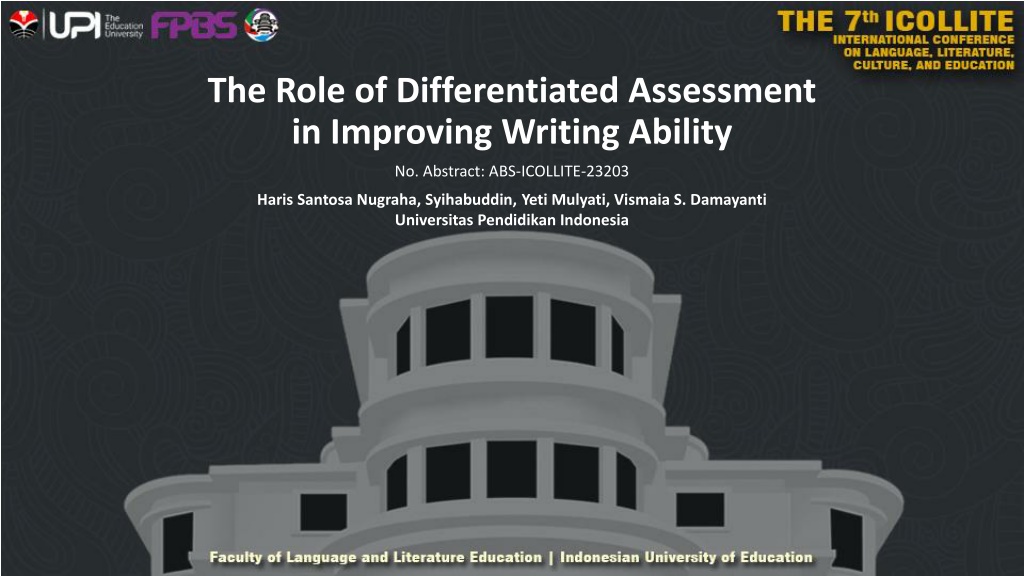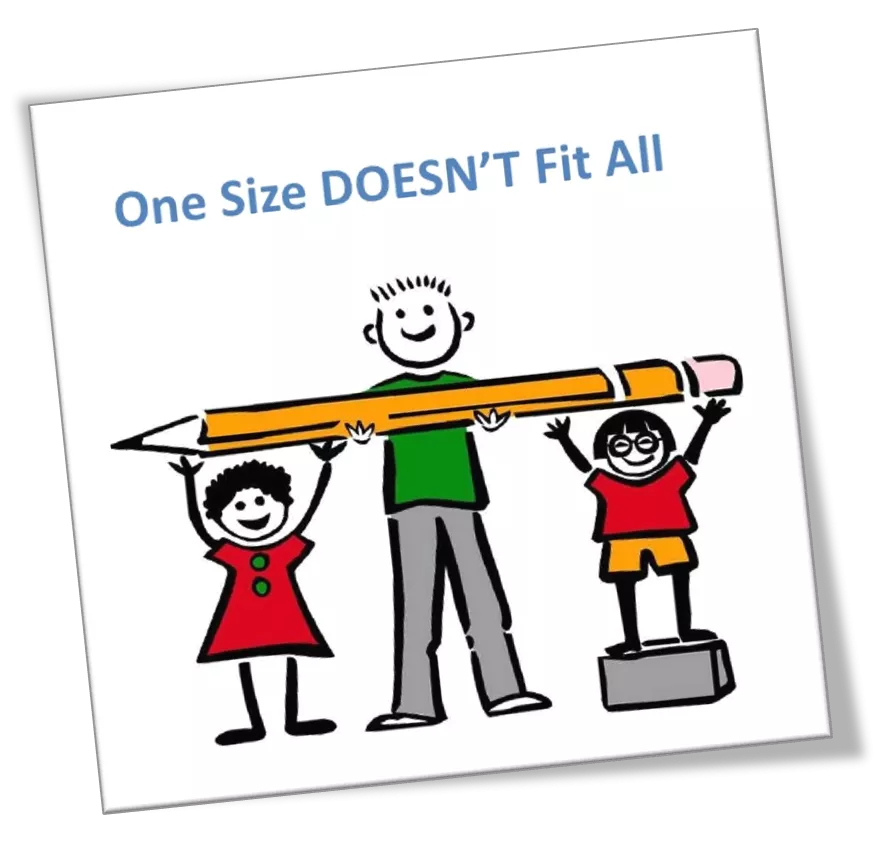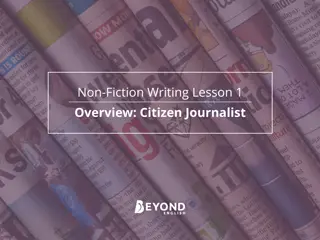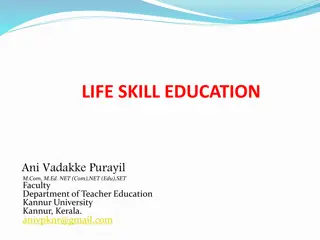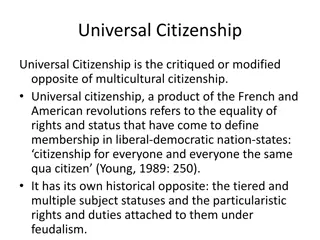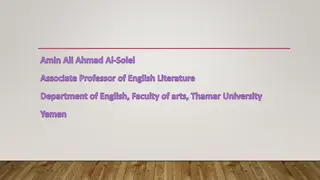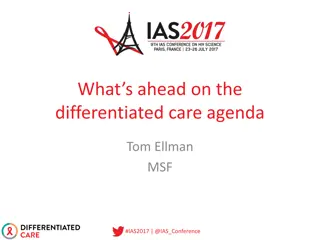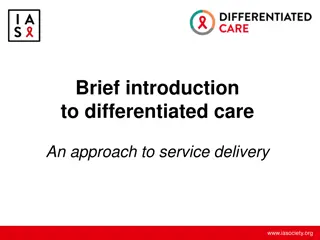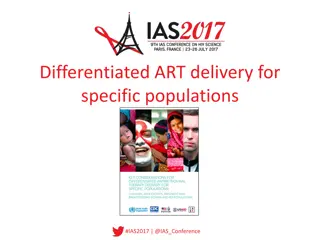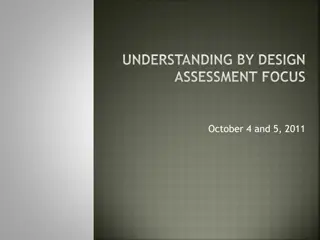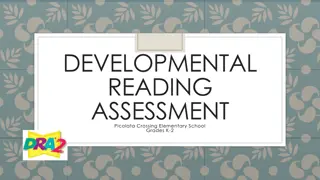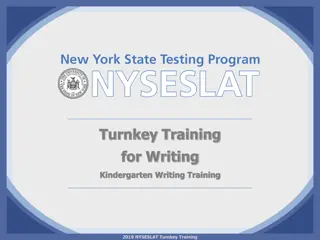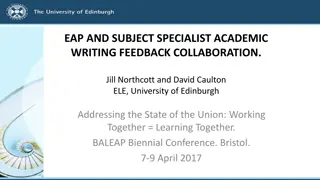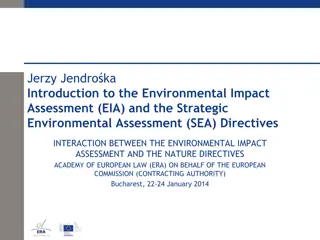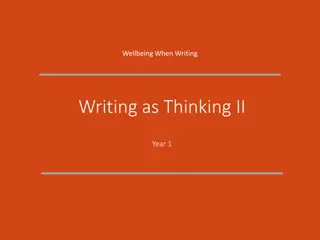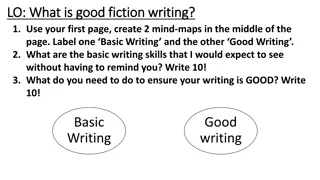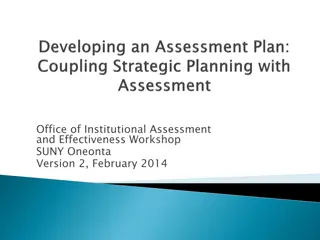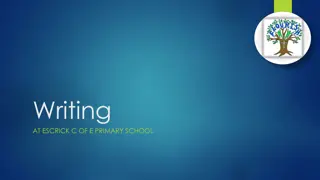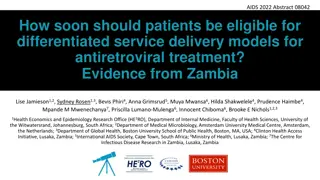Role of Differentiated Assessment in Enhancing Writing Skills
This study explores how differentiated assessment can improve writing abilities in students. It discusses the importance of tailored assessments to address individual student needs based on readiness, interests, and learning profiles. The research methodology and findings highlight the impact of differentiated assessment planning on student outcomes.
Download Presentation

Please find below an Image/Link to download the presentation.
The content on the website is provided AS IS for your information and personal use only. It may not be sold, licensed, or shared on other websites without obtaining consent from the author. Download presentation by click this link. If you encounter any issues during the download, it is possible that the publisher has removed the file from their server.
E N D
Presentation Transcript
The Role of Differentiated Assessment in Improving Writing Ability No. Abstract: ABS-ICOLLITE-23203 Haris Santosa Nugraha, Syihabuddin, Yeti Mulyati, Vismaia S. Damayanti Universitas Pendidikan Indonesia
INTRODUCTION Good learning can be seen from the quality of the assessment, as well as the quality of the assessment can show how the quality of learning is (Rosnaeni, 2021). Appropriate and continuous assessment makes students like and stay on track with the learning process (Chapman and King, 2008). Students' writing ability is still a concern and still has a red mark in language learning (Abidin, Y., 2015; Trismanto, 2017). Teachers/students still think that learning to write is difficult (Kristiani, A, 2009; Trismanto, 2017) There is a diversity of interests, readiness, and student learning profiles in the classroom (Munadlir, A., 2016)
LITERATURE REVIEW Differentiation assessment is a teacher's response to the needs of students who are formed and guided by a framework and assessment principles that are adjusted to the readiness, interests, and learning profile of students Chapman, C., & King, R., 2012). Learners have diverse backgrounds, both ethnic, cultural, socioeconomic level, abilities, customs, gender, etc. (Munadlir, A., 2016; ; Gable, Hendrickson, Tonelson & Van Acker, 2000; Guild, 2001). Differentiated assessment is a form of assessment that takes into account the differences between students (Tomlinson & Moon, 2013) Writing is a process of communicating indirectly between writers and readers to express ideas, opinions, and feelings to other parties through written language (Abbas, 2006; Suparno, 2009; Tarigan, 2013; Dalman, 2018) The stages of writing include obtaining ideas, processing ideas, producing ideas, and the stage of publishing ideas (Abidin, A., 2015). The procedure for learning to write includes the pre-writing, writing process, and post-writing stages (Sorenson, 2010).
METHOD Sources of data in this study were assessment tools, teachers, and students of SMA Negeri 3 Cimahi who were randomly selected from various backgrounds, interests, readiness, and learning profiles. The research instruments used were observation, interviews and analysis of documentation of differentiation assessment tools Data were analyzed through reduction, display, and data conclusion stages. The method used in this research is descriptive qualitative method
FINDING AND DISCUSSION Differentiated Assessment Planning Pre-Assessment Sheet Content Determination of assessment criteria Compilation of Assessment Tools Curriculum Analysis Process Student worksheet Competence (Attitudes, Knowledge, and Skills) Product Evaluation Sheet Student Diversity (Readiness, Interest, and Learning Profile)
Implementation of Differentiated Assessment PRE-ASSESSMENT (DIAGNOSTICS) When? (Time) Before learning begins. SUSTAINABLE ASSESSMENT (FORMATIVE) When? (Time) When learning takes place. FINAL ASSESSMENT (SUMATIVE) When? (Time) At the end of learning. Why? (Objective) To find out the abilities and needs of students in learning to write. Why? (Objective) To examine the development of students' writing learning according to their abilities and needs. Why? (Objective) To measure the achievement and final ability of students' writing. How? (Process) A diagnostic assessment is performed to measure: a. Writing ability (pre-test) b. Student interest (questionnaire) c. Student learning profile => learning style (questionnaire) How? (Process) a. Students reflect on pre-test results combined with learning objectives. b. Using feedback as a reference for improvement. c. The assessment instrument uses observation, self-assessment, peer-to-peer assessment, and worksheets. How? (Process) a. Adjusted to learning objectives. b. Assessment can be done in groups or individually. c. Assessment of each group of students can be different. d. Assessment instruments use: Written tests, projects, or portfolios. What? (Results) a. Can find out what needs to be taught to students based on the learning objectives set. b. Can develop lesson plans according to the circumstances and needs of students. c. Can map flexible student groups at the beginning of learning. What? (Results) a. Learning tailored to their abilities, interests, and learning profiles. b. Students can join groups flexibly. c. Students can find and determine the goals, weaknesses, and improvements in learning to write independently. What? (Results) a. Can know the final ability of students to learning to write. b. Can improve students' writing skills based on their abilities and needs.
The Role of the Differentiated Assessment Model in Improving Writing Ability Identify Strengths and Weaknesses The differentiation assessment model helps identify specific strengths and weaknesses in one's writing work. This allows writers to focus on specific aspects that need improvement, such as writing style, text organization, syntax or vocabulary. Providing Targeted Feedback This model provides more targeted feedback than typical appraisal approaches. Authors receive detailed information about what has been done well and where there needs to be improvement. That way, they can focus more on honing specific writing skills. Encourage Reflection and Editing By looking at the specific feedback from the differentiation scoring model, authors are encouraged to reflect on their work and make more detailed edits. This helps them to better understand the writing process and how to produce better work. Technical Skills Development The differentiation assessment model encourages writers to focus on technical aspects of writing, such as grammar, sentence structure, and word usage. By continuously practicing and improving these technical skills, writers can improve the quality of their writing significantly. Language Awareness Raising The differentiation assessment model can increase the writer's language awareness of the richness of the vocabulary and writing style. Through specific feedback, writers can broaden their word choices and develop a wider variety of writing styles. Increase Motivation Specific and constructive feedback from the differentiation assessment model can help increase writers' motivation to continue learning and improve their writing skills. When writers see progress in their writing, they feel more motivated to keep improving. Individualization of Learning The differentiation scoring model allows for customized feedback to suit the individual needs of each author. This helps in creating a more personalized and effective learning experience.
CONCLUSION The differentiation assessment model is an approach to assessment that focuses on providing specific and detailed feedback on skills or certain aspects of a work, in this case writing skills. The main goal is to understand the writer's strengths and weaknesses in a more specific context, so that writers can improve their writing skills effectively The differentiation assessment model has been shown to be effective in improving writing skills because it provides a more targeted assessment approach and helps writers focus on specific aspects that need improvement. With a combination of the right feedback, reflection, and consistent practice, writers can develop their writing skills even better. The results of the study show that each student can develop their writing skills according to their respective interests, readiness, and learning styles. The stages and instruments used empirically help students make good writing.
REFERENCES Abidin, Y. (2015). Pembelajaran bahasa berbasis pendidikan karakter. PT. Refika Karya Aditama. Abidin, Y. (2016). Revitalisasi penilaian pembelajaran : dalam konteks pendidikan multiliterasi abad ke-21. PT Refika Aditama. Akhadiah, S. (1999). Pembinaan Kemampuan Menulis Bahasa Indonesia. Erlangga. Ali, H. I. H. (2015). Toward differentiated assessment in a public college in Oman. English Language Teaching, 8(12), 27 36. Blaz, D. (2008). Differentiated assessment for middle and high school classrooms. Eye on Education. Chapman, C., & King, R. (2012). Differentiated assessment strategies: One tool doesn t fit all (hal. 199). Purba, M., Purnamasari, N., Soetantyo S., Suwarma, I.R., Susanti, E.I (2021). Naskah Akademik Prinsip Pengembangan Pembelajaran Berdiferensiasi (Differentiated Instruction) pada Kurikulum Fleksibel sebagai Wujud Merdeka Belajar. Jakarta: Pusat Kurikulum dan Pembelajaran, Badan Standar, Kurikulum, dan Asesmen Pendidikan, Kementerian Pendidikan, Kebudayaan, Riset, dan Teknologi, Republik Indonesia. Dalman, H. (2018). Keterampilan Menulis. PT Rajagrafindo Persada. Gardner, J. R. (2013). Assessment and learning. SAGE Publications Ltd. Hertberg-Davis, H. (2009). Myth 7: Differentiation in the regular classroom is equivalent to gifted programs and is sufficient. Gifted Child Quarterly, 53(4), 251 253. https://doi.org/10.1177/0016986209346927 Kemdikbudristek. (2021). Panduan pembelajaran dan asesmen jenjang pendidikan dasar dan menengah (SD/MI, SMP/MTs, SMA/SMK/MA). Kementerian Pendidikan, Kebudayaan, Riset, dan Teknologi. Moon, T. R. (2005). The Role of Assessment in Differentiation. Theory Into Practice, 44(3), 226 233. https://www.jstor.org/stable/3497002 Risko, V. J., & Walker-Dalhouse, D. (2010). Making the most of assessments to inform instruction. The Reading Teacher, 63(5), 420 422. Scherer, M. (2016). On formative assessment: readings from Educational leadership. ASCD. Tomlinson, C. A., & McTighe, J. (2006). Integrating differentiated instruction & understanding by design: Connecting content and kids. Association for Supervision and Curriculum Development. Tomlinson, C. A., & Moon, T. R. (2013). Assessment and Student Success in a Differentiated Classroom. In Assessment and Student Succes in a Differentiated Classroom. http://www.ascd.org/publications/books/108028/chapters/Differentiation@-An-Overview.aspx Yunus, M. (2007). Model kurikulum dan pembelajaran berdiferensiasi (Penelitian pengembangan dalam mata pelajaran Bahasa Indonesia di SMA Wilayah Kota Bogor). Universitas Pendidikan Indonesia. nces are in the APA style, 7th edition.
THANK YOU! Contact us: harissantosa89@upi.edu (Co-Author)
